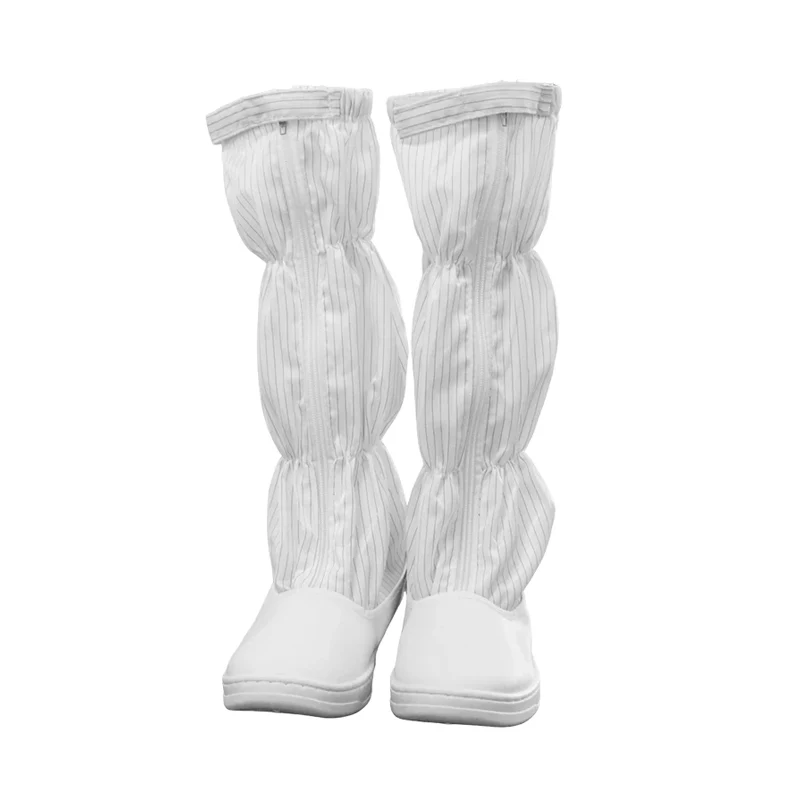Why Are ESD Shoes Becoming the Future of Workplace Safety?
2025-10-23
In today’s high-tech workplaces, where sensitive electronic components dominate manufacturing lines, Electrostatic Discharge (ESD) Shoes have emerged as an essential safety solution. Static electricity, though invisible, can cause serious damage to electronic devices and ignite flammable materials, leading to costly accidents or production halts. ESD shoes are designed to prevent such incidents by safely discharging static buildup from the body to the ground, ensuring the protection of both workers and products.
What Are ESD Shoes and How Do They Work?
ESD Shoes, short for Electrostatic Discharge Shoes, are specialized footwear engineered to prevent static electricity accumulation in the human body. They are typically used in environments where even a small spark can damage electronic components, ignite chemical vapors, or disrupt sensitive manufacturing processes.
The shoes achieve this by incorporating conductive materials within their structure—often in the sole or insole—that allow electrical charges to dissipate safely into the ground. Unlike regular antistatic shoes, ESD shoes maintain a controlled resistance range, typically between 100 kΩ and 35 MΩ, ensuring both safety and comfort for prolonged use.
Here’s a breakdown of key technical specifications often found in high-quality ESD shoes:
| Parameter | Description |
|---|---|
| Surface Resistance | 1×10⁵ – 3.5×10⁷ Ω (meets EN ISO 61340-5-1 standards) |
| Material Composition | Conductive PU outsole, breathable leather or microfiber upper |
| Insole | ESD foam with moisture-wicking and anti-fatigue design |
| Slip Resistance | SRC-certified outsole with oil-resistant properties |
| Temperature Resistance | Operates effectively in -10°C to +50°C environments |
| Available Sizes | EU 35–48 / US 3–14 |
| Certifications | CE, ISO 20345, EN 61340, ASTM F2413 |
| Color Options | Black, white, grey, and custom corporate designs |
Why Are ESD Shoes Crucial for Safety and Productivity?
The Hidden Dangers of Static Electricity
Static electricity poses invisible yet severe risks in modern production. A discharge as small as 100 volts can destroy microelectronic circuits, while humans typically cannot feel a discharge below 3,000 volts. This means critical damage can occur long before anyone notices a problem.
When ESD incidents happen, they can lead to:
-
Component failure in semiconductors and circuit boards
-
Data loss or system errors in sensitive devices
-
Explosions or fires in environments with flammable vapors or powders
-
Production downtime and costly equipment replacements
How ESD Shoes Prevent Damage
ESD shoes form part of a complete ESD control system, alongside conductive flooring, wrist straps, and grounding mats. When worn properly, they continuously discharge static electricity generated by human movement to the ground. This ensures that operators maintain a neutral potential at all times, preventing unwanted electrostatic transfer to nearby devices or materials.
In addition, ESD shoes improve worker comfort through ergonomic design. Many models integrate shock-absorbing soles, breathable linings, and lightweight materials, which help reduce fatigue during long work shifts.
Why Businesses Invest in ESD Footwear
From a business perspective, ESD footwear represents a long-term cost-saving measure. By reducing product defects and unplanned downtime, companies can increase production reliability and reduce waste. Moreover, compliance with international safety standards enhances corporate credibility and ensures alignment with global clients’ ESD control requirements.
How Are ESD Shoes Evolving with Technology and Sustainability?
As industries move toward smart manufacturing and environmental responsibility, ESD shoes are evolving in both design and functionality. Modern manufacturers are integrating advanced materials, ergonomic structures, and even IoT-based features to redefine workplace safety.
Emerging Trends in ESD Footwear
-
Lightweight Composite Materials – Replacing steel toe caps with composite alternatives enhances comfort while maintaining impact resistance.
-
Breathable Microfiber Uppers – Improve air circulation and hygiene for long wear.
-
Smart ESD Monitoring – Future models are expected to include embedded sensors that monitor grounding effectiveness in real time.
-
Eco-Friendly Manufacturing – Recycled materials and solvent-free adhesives are being adopted to minimize environmental impact.
-
Enhanced Slip Resistance – Dual-density outsoles now provide superior grip across wet, oily, or uneven surfaces.
Market Growth and Industry Demand
The global ESD protective footwear market is forecast to grow steadily due to increased automation, cleanroom expansion, and electronics manufacturing. Industries are also placing greater emphasis on worker well-being, driving demand for designs that balance safety with ergonomic comfort.
Manufacturers like Xin Lida have recognized this shift, investing heavily in R&D, material innovation, and compliance testing. Their advanced ESD shoes meet stringent IEC, ISO, and ASTM standards, ensuring durability, comfort, and consistent static control in even the most demanding work environments.
Common Questions About ESD Shoes
Q1: What is the difference between ESD shoes and antistatic shoes?
A: While both types reduce static buildup, ESD shoes maintain a much stricter resistance range (100 kΩ to 35 MΩ) for continuous static discharge. Antistatic shoes only prevent large static accumulations but may not provide controlled grounding, making them unsuitable for sensitive electronics manufacturing or cleanrooms.
Q2: How should ESD shoes be maintained to ensure long-term performance?
A: ESD shoes should be tested regularly using an ESD tester to confirm their resistance remains within the specified range. They must be worn on conductive flooring and kept free of insulating materials like dust or oil. Cleaning with mild detergent and avoiding fabric softeners or waxes will preserve conductivity. Regular replacement every 6–12 months, depending on usage, is recommended for maximum reliability.
Conclusion: The Future of Safety Footwear with Xin Lida
As industries continue to adopt advanced automation and precision manufacturing, the role of ESD shoes becomes increasingly vital. They are no longer just a compliance requirement—they are a fundamental part of workplace safety, product quality assurance, and operational efficiency. The future of ESD footwear lies in the integration of comfort, intelligence, and sustainability, ensuring that safety never compromises productivity.
Xin Lida, a trusted manufacturer with years of expertise in ESD protection technology, continues to lead with innovative, certified, and durable solutions tailored to modern industrial needs. Each pair is designed to safeguard workers and sensitive equipment while promoting comfort and long-term performance.
For more details, customized solutions, or partnership opportunities, contact us today to explore how Xin Lida can elevate your safety standards and help build a more efficient, static-free workplace.



